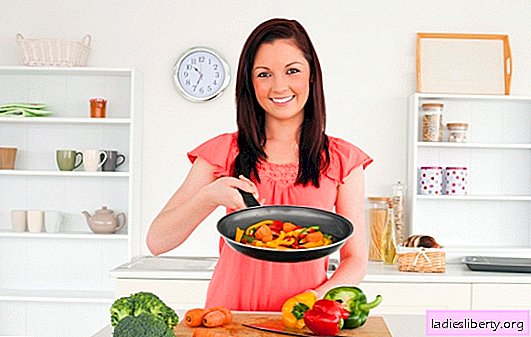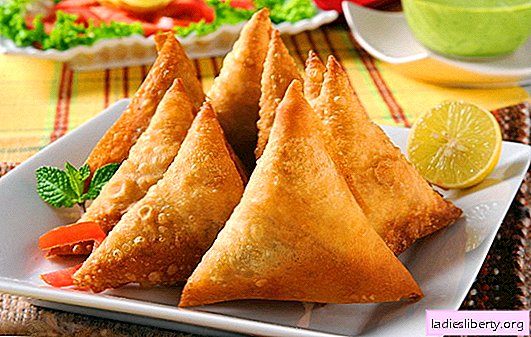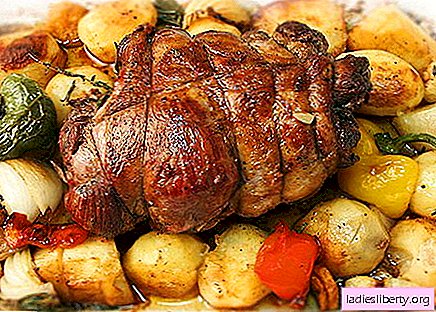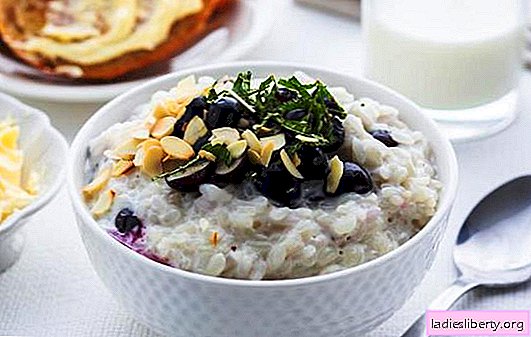
It's no secret that everyone loves to eat. But, in order to cook, for example, a delicious dinner, not enough good mood and fresh products. The utensils are also very important here, and in particular the pan.
In the 21st century, choosing a quality pan is pretty difficult. Shops are simply teeming with a variety of pans made from various materials, and each of them is used for its intended purpose (take at least a pancake pan).
In order not to panic around the store in search of a consultant, let's figure it out. Which pan to buy?
1. Cast-iron frying pan (favorite of most hostesses over the years)

Cast iron is the most common material for making pans. Despite all the innovations, they haven’t come up with anything better. Cast iron cookware is universal. Although it’s hot, even carcasses, even pancakes, peki with all the functions, she can cope with a bang. Such a pan heats up for quite some time, but also it cools down for a very long time.
Special and non-stick coating in such a pan. It is formed during cooking, when cast iron, with its porous texture, gradually absorbs oil during cooking.
To look after such a frying pan is not difficult, it does not even need to be washed. It is enough to calcine it on a fire and rinse with cold water.
For lovers of light pans, this model is not suitable. Cast iron is quite heavy, and the price will be impressive (if you need quality and durability).
2. Copper pan

For connoisseurs of aesthetics, this tableware looks amazing!
It is also suitable for those who need to cook dishes with a rapid change in temperature, since copper cools quickly and accordingly quickly heats up.
Such a pan will be many times more expensive than a cast-iron. But she will serve you for a long time.
3. Aluminum pan

Such a pan will be light, which is very convenient, and cheap. It is afraid of high temperatures, its bottom is thin and will quickly deform.
Another not unimportant minus - it can only be used on gas stoves.
But all this applies to stamped aluminum pans.
Cast pans are quite heavy and this distinguishes them from stamped. On such dishes, you can cook on gas and on an electric stove.
Inner pan
The inner coating of the pan also varies.
Consider first non-stick and ceramic. Both coatings are afraid of sharp objects, sudden changes in temperature. For those who do not favor cooking in oil, such a pan will do just fine. No matter what the coating will be, both can be cooked almost without oil.
Non-stick coating created on the basis of teflon, which is quickly damaged by overheating and begins to emit a lot of harmful and toxic gases.
Ceramic coating, unlike Teflon, does not emit harmful substances at high temperature. But they do not make it from burnt clay, from a special material with microparticles of sand.
Marble coating - One of the varieties of Teflon coating, but with the addition of marble chips. It is much lighter than pig-iron and, unlike Teflon and ceramics, cools more slowly and evenly. Not so much afraid of mechanical damage, but still you should not turn food on it with a fork - it will last longer.
Is there some more titanium, diamond and granite coatings. They are classified as nanocomposite, the most reliable and most expensive. The service life of such a pan will be at least 25 years. These materials do not emit any hazardous substances, evenly warm up and keep the temperature. The main difference between dishes with such a coating from cast iron is their weight is much lower. Such coatings are also not afraid of sharp and metallic objects.
ATTENTION, MEN! If a woman has a frying pan in her hands, it’s not a fact that there will be cutlets!











